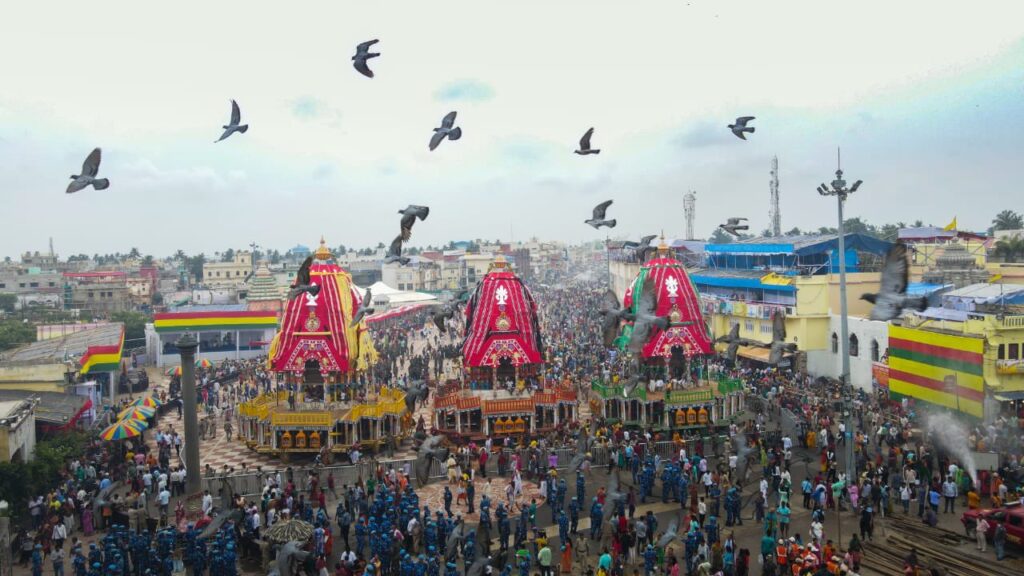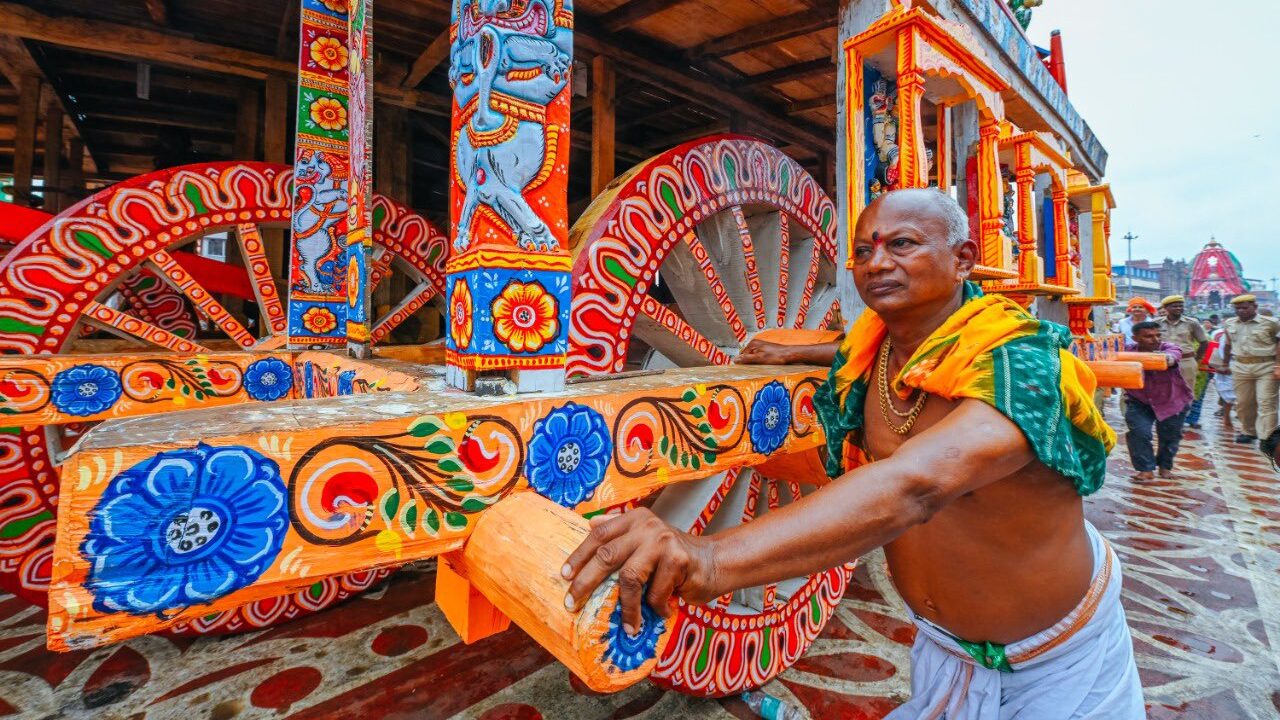Unlike popular belief, the Rath Yatra is not a one-day festival, rather, it goes on for 11 days.

Kolkata: Rath Yatra is the second largest religious congregation after the Kumbh Mela. Rath Yatra is a sacred and beautiful festival. It is said that during this time, the Lord travels around Puri in Odisha, which is one of the ‘Char Dhams’ of the country, in his own chariot.
Puri is also known as ‘Jagannath Puri’ because of Lord Jagannath’s presence. It is believed that the Lord rides around in his glorious chariot along with Balabhadhra (Balaram) and Subhadra to ensure the well-being of his followers. The second day of the shuklapaksha of the month of Ashar in the Indian calendar is celebrated as Rath Yatra.
However, unlike popular belief, the Rath Yatra is not a one-day festival, rather, it goes on for 11 days.
Here are 15 lesser known and interesting facts about Rath Yatra and the Puri Jagannath Temple:
Rath Yatra, an 11-day festival: The annual festival in Odisha’s Puri commences on Rath Yatra and continues till Niladri Vijaya, a period of 11 days. Puri and the Jagannath Temple see the maximum footfall during these 11 days of the year. Usually, maximum people are seen on the day of Rath Yatra and on the day of ‘Bahuda Yatra’ or the return journey. Because during this time, there is no caste discrimination in this otherwise orthodox Hindu temple. Everyone can enter the temple freely.
Names of the chariots: Three separate chariots are taken out which house the three different deities — Jagannath, Balabhadra and Subhadra. The names of their chariots are Nandaghosh, Taladhvaja and Devdolna, respectively. Lord Jagannath’s chariot Nandaghosh runs on 18 wheels. It is 44 feet tall and red and yellow in colour. Balabhadra’s chariot, Taladhvaja is 43 feet high, has 14 wheels and is red and green in colour. And Subhadra’s chariot Devadolna is 12-wheeled and black and red in colour.

Mystery behind the chariots: Every year, the three chariots are built using new wood. About 1,400 carpenters volunteer to build the chariots. Some special features or qualities have to be noticed in the trees from which the wood of these chariots come. Each chariot is accompanied by four horses.
Name of the horses: The names of the horses that pull Lord Jagannath’s chariot Nandaghosh are — Shankha, Balakha, Shweta and Haridashwa. All the horses are white in colour. The names of the black horses in Balabhadra’s chariot are Tribra, Ghoda, Dirghasharma and Swarnanabha. Subhadra’s chariot Devdolna’s horses are red in colour and are called Rachika, Machika, Jita and Aparajita.
Different names of the flags and the ropes: The flag atop Jagannath’s chariot is called Trailokyamohini, the one atop Balabhadra’s chariot is called Unnani and the one on Subhadra’s chariot is known as Nadambika. The rope that is used to pull Jagannath’s chariot is called the Sankhachuda Nagini, the one used to pull Balabhadra’s chariot is called Basuki Naga and the one used to pull Subhadhra’s chariot is known as Swarnachuda Nagini.

Collection of wood to make the chariots: The wood used to make the chariots is brought from two adjoining jungles — Daspalla and Ranapur. After the Rath Yatra, the wood is used to cook the Mahaprasad in the kitchen inside the temple.
Lord Jagannath’s chariot won’t move just by pulling the ropes: It is believed that the chariot does not move just by pulling the ropes of the chariot. Lord Jagannath refuses to move. So, the chariot moves forward only after 100 people push it from behind. Only women are allowed to pull Subhadra’s chariot.
The royal broom: Even today, the chariot comes out to the road only after the path is swept using a golden broom that the king of Puri had left behind.
Construction of the chariots: The construction of the chariots begins from Akshaya Tritiya opposite the palace and the main office.
Closure of temple before Rath Yatra: The doors of the temple are closed a week before the Rath Yatra. It is said that Lord Jagannath has a high fever during this time and takes rest.

Disregard of nature’s code of conduct: A piece of cloth flies in the wind’s direction and this is science. But the flag hoisted atop Jagannath temple is a unique exception. It flows in the opposite direction of the wind without any scientific justification. The Jagannath Temple has no shadow at any time of the day.
Changing the flag of the temple: The flag above the dome of the Jagannath temple in Puri is changed every day by climbing to a height equal to about 45 storeys. This practice has been going on in the same fashion since the day the temple was built. This practice is carried out daily by the priests without any fail. It is believed that if the work is stopped one day, the temple will be closed for the next 18 years.
Sudarshan Chakra and the unsolved mystery: The chakra mounted on top of the Jagannath temple in Puri weighs about 1 tonne. It was not picked up by any machine. It was mounted with the help of a human pyramid. Also, from any point around the temple, the chakra looks the same, facing at a person.
Heavy rains and Rath Yatra: According to records, there is no Rath Yatra in the past which did not witness heavy rains. The festival is celebrated amid heavy rains every year without any fail.
On the way back: Jagannath, Balabhadra and Subhadra return to their aunt’s house in Gundicha after nine days. On the way back, Lord Jagannath is offered Puri’s famous sweet pora pithe.
Interestingly, the English word ‘juggernaut’, which means “a huge, powerful and irresistible force” was coined by the British after they were inspired by the huge chariot of Jagannath.
